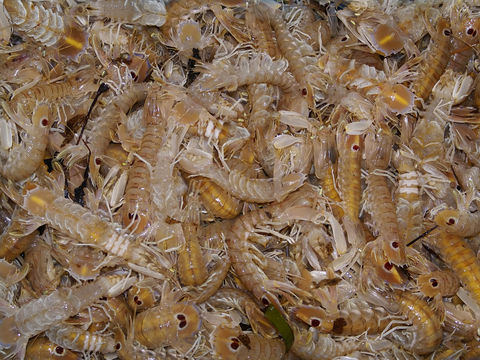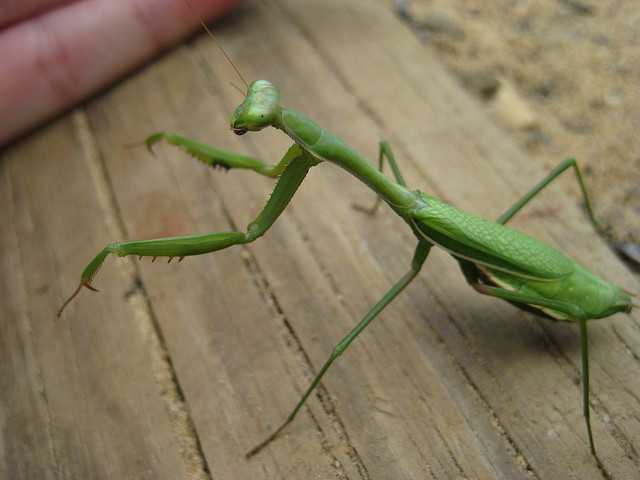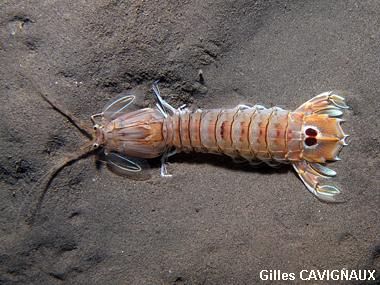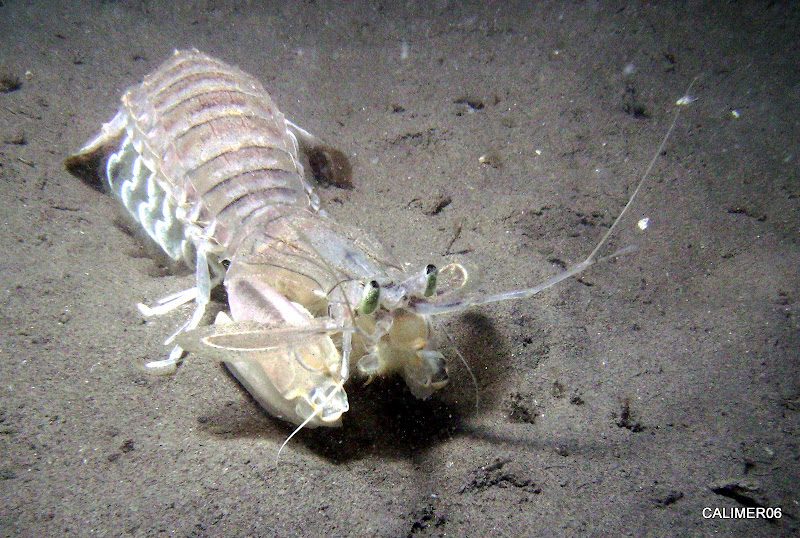Don’t judge a book by its cover!!
Looking
at Squilla mantis it may
seem like it is harmless. BUT think again! It is one of the most
voracious predators and could be one of the quickest as well.
 On
this page you’ll get to see how these amazing organisms acquire their
food, their predatory habits, and also how all these traits and behaviors
help these organisms to adapt to the lifestyle that they live.
On
this page you’ll get to see how these amazing organisms acquire their
food, their predatory habits, and also how all these traits and behaviors
help these organisms to adapt to the lifestyle that they live.
There are two classifications of mantis shrimp: smashers or spearers.
Luckily for you Squilla mantis are considered to be spearers. These organisms are
extraordinary. They have raptorial-like limbs just like the praying
mantis (reason why it is called “mantis shrimp” it resembles the praying
mantis).
 Can you see it in the two figures? These spearers hide out
during the day mostly and come out at night to prey. This behavior is
reinforced by their well-developed compound eyes. The cornea of the
species is bilobed and is in the shape of a cylinder. One eye contains
up to 4,000 ommatidia, with rows of around 80. They are modified to help
them judge depth and seeing at night to hunt for prey. There was
actually a study done to break down the components of Squilla
mantis compound eye. To read about this,
check here!
Can you see it in the two figures? These spearers hide out
during the day mostly and come out at night to prey. This behavior is
reinforced by their well-developed compound eyes. The cornea of the
species is bilobed and is in the shape of a cylinder. One eye contains
up to 4,000 ommatidia, with rows of around 80. They are modified to help
them judge depth and seeing at night to hunt for prey. There was
actually a study done to break down the components of Squilla
mantis compound eye. To read about this,
check here!

Now let us talk about how they prey. The way Squilla mantis hunts is amazing. They usually stay in their burrow and wait until prey comes along. Then they will spring out of the burrow with lighting speed and grabs on to the prey and bring them back in to the burrow to enjoy the freshly captured prey. It is amazing how fast they spring out of the burrow with the force generated by their body.
Another body structure that helps
 Squilla mantis to survive is
their exoskeleton. These skeletons are made out of chitin. It can take some
damaging hits from other organisms that are its own size. On the
exoskeleton of Squilla mantis has two spots right on its tail.
Squilla mantis also goes through molting to acquire new
exoskeleton.
Squilla mantis to survive is
their exoskeleton. These skeletons are made out of chitin. It can take some
damaging hits from other organisms that are its own size. On the
exoskeleton of Squilla mantis has two spots right on its tail.
Squilla mantis also goes through molting to acquire new
exoskeleton.
Read more about the Squilla mantis feeding habits!
